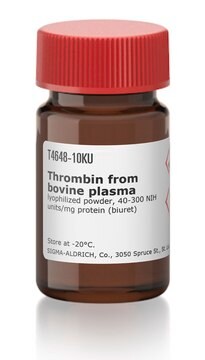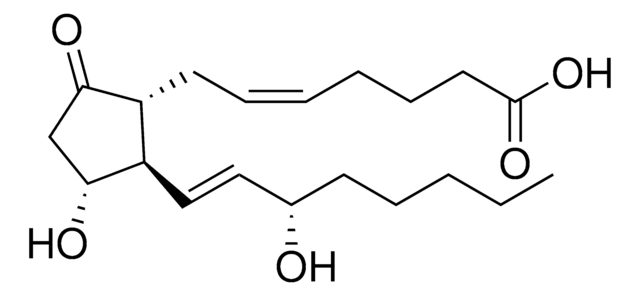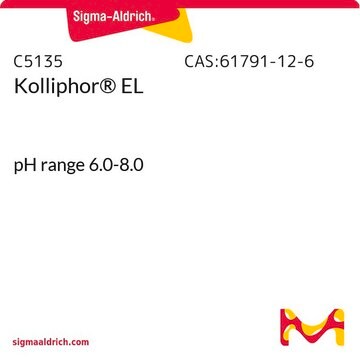P3932
Poly(2-hydroxyethyl methacrylate)
BioReagent, powder, suitable for cell culture
Synonym(s):
Poly(2-HEMA), Poly-HEMA
Sign Into View Organizational & Contract Pricing
All Photos(3)
About This Item
Linear Formula:
(C6H10O3)n
CAS Number:
MDL number:
UNSPSC Code:
12352207
PubChem Substance ID:
NACRES:
NA.75
Recommended Products
biological source
synthetic (organic)
Quality Level
product line
BioReagent
form
powder
technique(s)
cell culture | mammalian: suitable
solubility
ethanol: 120 mg/mL
density
1.15 g/mL at 25 °C (lit.)
SMILES string
CC(=C)C(=O)OCCO
InChI
1S/C6H10O3/c1-5(2)6(8)9-4-3-7/h7H,1,3-4H2,2H3
InChI key
WOBHKFSMXKNTIM-UHFFFAOYSA-N
Looking for similar products? Visit Product Comparison Guide
Application
Poly(2-hydroxyethyl methacrylate) has been used:
- as a nonadhesive substrate in the preparation of single cell suspensions
- to implant into mice cornea for corneal micropocket assay
- to coat the well plates for sphere assay using adipose-derived mesenchymal stem cells
Biochem/physiol Actions
Poly(2-hydroxyethyl methacrylate) is an acrylic compound and has dental usage. It is mainly used to inhibit cell adhesion to growth surfaces in culture vessels.
Physical form
Water-swellable polymer. Hydrogel.
Storage Class Code
11 - Combustible Solids
WGK
WGK 3
Flash Point(F)
Not applicable
Flash Point(C)
Not applicable
Personal Protective Equipment
dust mask type N95 (US), Eyeshields, Gloves
Choose from one of the most recent versions:
Already Own This Product?
Find documentation for the products that you have recently purchased in the Document Library.
Human cortical glial tumors contain neural stem-like cells expressing astroglial and neuronal markers in vitro
Ignatova Tatyana N, et al.
Glia, 39(3), 193-206 (2002)
Embryoid body formation from embryonic and induced pluripotent stem cells: Benefits of bioreactors
Rungarunlert S, et al.
World journal of stem cells, 1(1), 11-11 (2009)
VAP-1-Mediated M2 Macrophage Infiltration Underlies IL-1beta-but Not VEGF-A-Induced Lymph-and Angiogenesis
Nakao S, et al.
The American Journal of Pathology, 178(4), 1913-1921 (2011)
Gamze Varan et al.
Nanomaterials (Basel, Switzerland), 8(2) (2018-01-27)
Amphiphilic cyclodextrins are biocompatible oligosaccharides that can be used for drug delivery especially for the delivery of drugs with solubility problems thanks to their unique molecular structures. In this paper, Paclitaxel was used as a model anticancer drug to determine
Manuele Giuseppe Muraro et al.
Stem cells translational medicine, 1(8), 592-603 (2012-12-01)
Increasing evidence that cancers originate from small populations of so-called cancer stem cells (CSCs), capable of surviving conventional chemotherapies and regenerating the original tumor, urges the development of novel CSC-targeted treatments. Screening of new anticancer compounds is conventionally conducted on
Our team of scientists has experience in all areas of research including Life Science, Material Science, Chemical Synthesis, Chromatography, Analytical and many others.
Contact Technical Service







